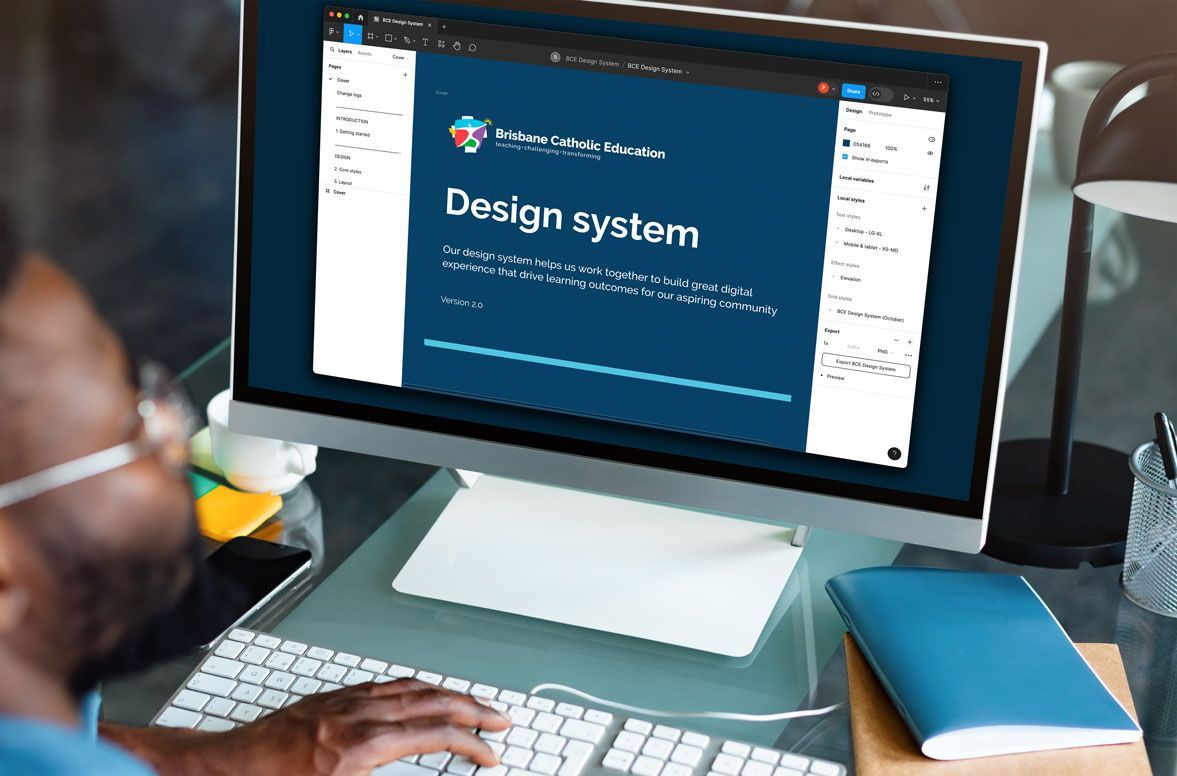Design System Uplift
The BCE Design System was upgraded in partnership with an external design consultancy, with research and analysis driving solutions to key usability challenges. As part of the internal team, I led the process from our side—guiding collaboration, shaping priorities, and ensuring the system evolved into a more effective, user-friendly resource. Today, as product owner, I continue to oversee its growth and adaptability.

Objective
The primary objective was to address the challenges and inefficiencies in maintaining and effectively using the BCE Design System. The research aimed to identify and resolve issues related to outdated documentation, platform compatibility, and the lack of a dedicated product owner. The goal was to upgrade the design system to ensure it remains a valuable and usable resource, providing a reliable source of truth for teams making design decisions.
Research methods
To gather data, a combination of methods were employed:
Surveys and interviews: I met with key stakeholders and users of the BCE Design System to understand their pain points and requirements.
Tool analysis: I analysed industry-leading design tools to determine the best platform for upgrading the design system.
Desktop review: In collaboration with a design consultancy, we conducted a thorough review of components used in BCE products .
Project backlog: In collaboration with a design consultancy, we established a minimum viable product (MVP) list of required design components.
These methods were chosen to ensure a comprehensive understanding of the issues and to gather actionable insights from both internal and external perspectives.
Synthesise insights
The research revealed several key issues:
Documentation challenges: The BCE Design System documentation was difficult to update due to its location on a SharePoint site and the need for specific skillsets.
Platform compatibility: The original design files were in Sketch, a Mac-only tool, causing compatibility issues for Windows users.
Outdated design system: The BCE Design System was based on Microsoft's UI Fabric, which has since been updated to MS Fluent UI.
Lack of ownership: There was no dedicated role for managing the design system, leading to inconsistent updates and maintenance.
These insights highlighted the need for a more accessible, collaborative, and well-governed design system.
Application of research to design decisions
The findings directly influenced several key design decisions:
Transition to Figma: Based on the compatibility and collaborative features of Figma, the decision was made to upgrade the design files from Sketch to Figma. This move addressed the platform compatibility issue and made the design system more accessible to all users.
Governance framework: A comprehensive governance framework was developed to ensure consistent updates, maintain design and brand consistency, and prevent usability issues. This framework included roles and responsibilities, and processes for ongoing improvements.
Reflect
The research process provided valuable lessons:
Need for governance: A clear governance framework is essential for maintaining the integrity and usability of the design system.
Continuous improvement: Regular feedback and updates are necessary to keep the design system relevant and useful.
Importance of accessibility: Ensuring that the design of BCE products are accessible to all users, the design system was developed to meet WCAG 2.1 Level AA.
I am proud to have led this initiative and thoroughly enjoyed collaborating with the design consultancy firm to drive this project forward. The support I received from my manager, project manager, and change manager was invaluable, and I deeply appreciate their contributions. I also want to acknowledge the product and developer teams, whose feedback during the research phase were crucial.
Initially, I anticipated some hesitation in adopting the updated design system. However, it turned out to be an immediate success. The Figma-based design system allowed teams to easily access components and collaborate on designs. This successful adoption was further strengthened by an effective change management process, comprehensive training sessions, and ongoing community of practice meetings.
Moreover, I am honoured to have taken on the role of product owner for the revised design system. This role enables me to ensure that the design system remains a dynamic resource that supports the evolving design needs of our organisation.



